Milk alternatives, also called nut milks, plant-based milks, and non-dairy beverages, have become a go-to low-FODMAP staple in recent years. There are lots of great non-dairy options to choose from and while it may seem overwhelming at times, these “milks” can serve as a fun, healthy way to add variety back into your diet.
As a low-FODMAP trained dietitian, IBS sufferer, plant-based milk connoisseur, and curator of several low-FODMAP grocery lists, I have read a LOT of milk alternative ingredient labels and drank a lot of low-FODMAP milk alternatives, so I feel pretty darn confident that I can help you discover something you’ll love. My goal in this post is to help you understand the nutritional differences between these plant-based beverages and find a product or two that keeps your gut feeling great.
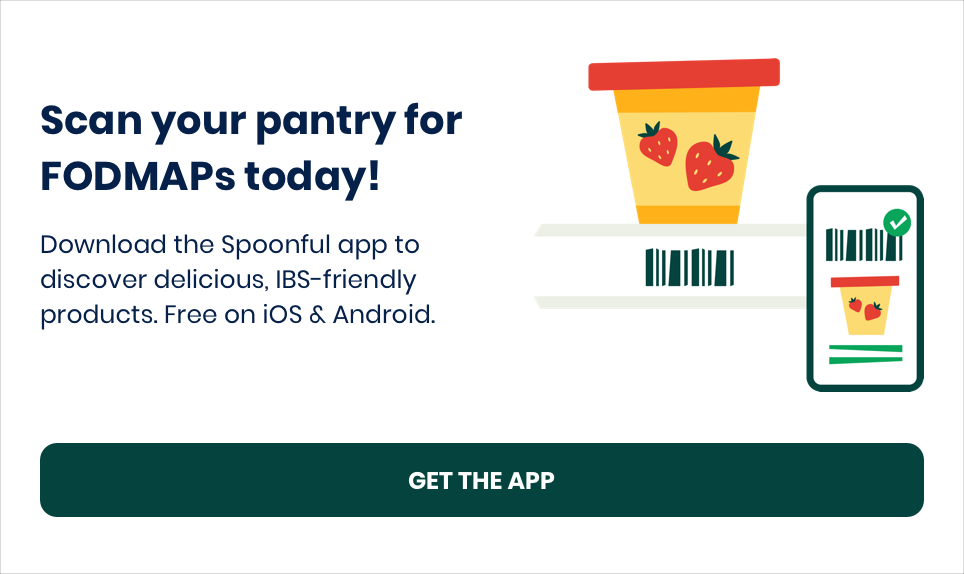
Nutritional Profile of Cow’s Milk vs Non-Dairy Beverages
Milk alternatives offer quite a different nutrient profile than cow’s milk, which may be important to take into consideration when determining the best fit. Ensuring one consumes adequate protein, calcium, Vitamin D, iron, and folate is especially important if you are swapping these plant-based milks for cow’s milk. Be sure to follow up with a dietitian to ensure you are consuming adequate nutrients if you are making these substitutes for children, during pregnancy, and if you have specific nutrition needs.
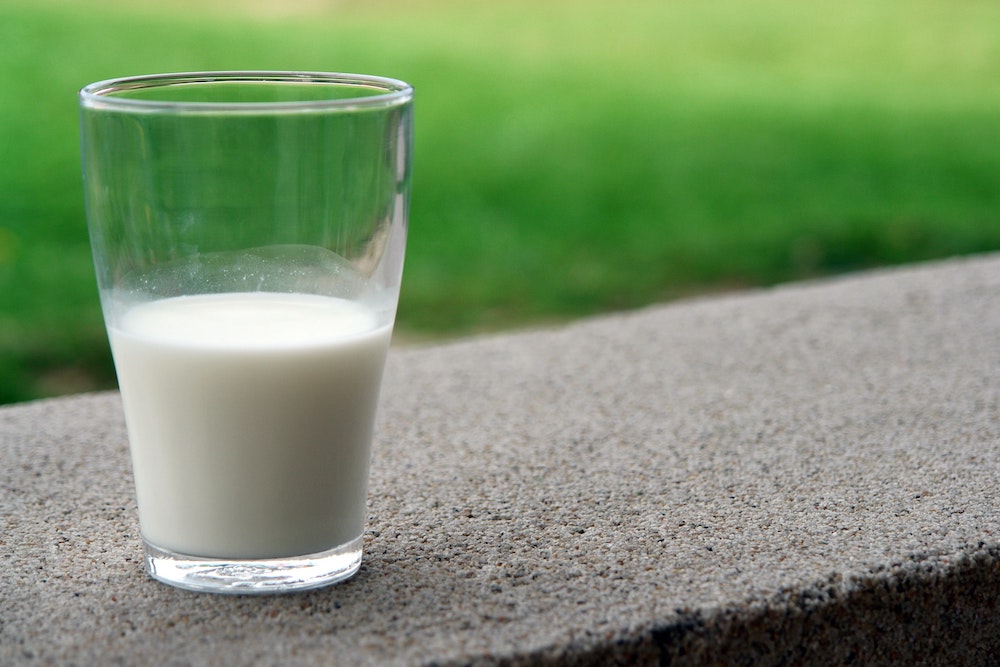
Here’s a quick breakdown of the nutritional content of the various non-dairy milks.
- Oat, pea, rice, hazelnut, peanut, walnut, and soy milk provide similar calories as cow milk.
- Unsweetened almond, coconut, hemp, flax, and cashew milk are lower in calories.
- Fat content ranges greatly and is often present in larger amounts in coconut and nut-based milks.
- Sugar content varies greatly. While there is no added sugar in cow milk there are twelve grams of naturally occurring milk sugar. Alternative milks contain no added sugar or are very low in added sugar, however sweeteners are often added in varying amounts.
- All milk alternatives are lower in protein except soybean and pea milk.
- Pea protein milk has more potassium than cow milk and soy milk contains similar amounts of potassium. Many other milk alternatives are lower in potassium.
- Many of the enriched milk alternatives have similar or more calcium and Vitamin D than cow milk.
Reminder: Cow’s milk, A2 milk, and goat’s milk) contain lactose, making them high-FODMAP beverages. Lactose-free milk is pretreated with a lactase enzyme at the time of processing, making it 100% lactose-free and low FODMAP.
What Milk Alternatives are Low FODMAP?
Almondmilk
Almondmilk is low FODMAP at one cup. Though it is one of the most popular plant-based milks, almondmilk often confuses people from a FODMAP perspective, because almonds are high FODMAP at serving sizes greater than ten. Interestingly enough, most almondmilks have no more than four to six nuts per cup, which explains why they’re often low in calories and protein.
Watch out for those with extra protein or fiber, since pea protein (pea protein has been removed from Monash app and FODMAP content is unavailable at this time), chicory root, and inulin are sometimes added.
Natural flavors are often added to almondmilks, which are unlikely to be high FODMAP. Natural flavors are more of a concern in quantities greater than 2% when referring to savory products due to potential for garlic and onion contamination. There are many options to choose from including sweetened, unsweetened, vanilla, chocolate – these are all low FODMAP.
Macadamia Milk
Macadamia milk, tested low at 1 cup, is a great low-FODMAP milk alternative. Feel free to indulge in this yummy, buttery nut milk – definitely one of my favorites. It foams up super well making it perfect for coffee drinks.
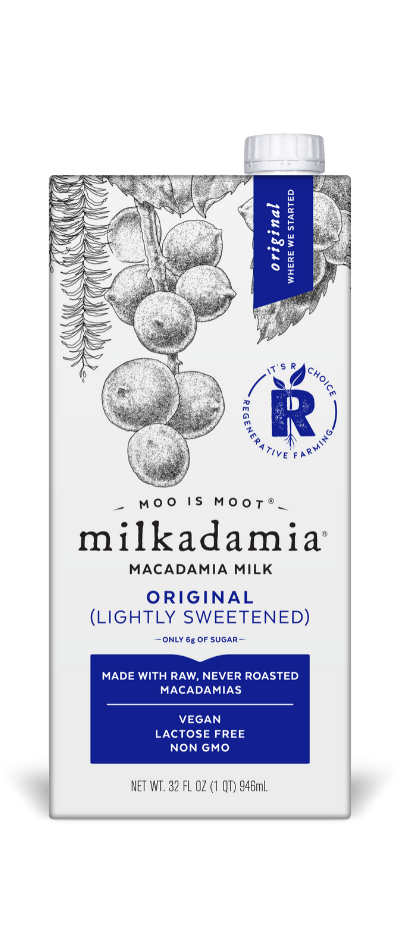
Do not be concerned with the one gram of pea protein.
Quinoa Milk
Quinoa milk (with and without chia) is low FODMAP at one cup per FODMAP Friendly. This milk is rather challenging to find in the US, however I did find this brand years ago and thought it was quite delish. If you are not a quinoa fan, this is not a milk for you since it definitely has a quinoa taste. Watch out for quinoa milk sweetened with agave since this can make it excessive in fructose.
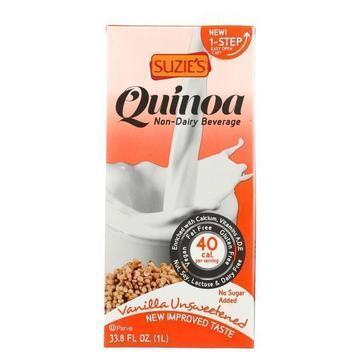
Rice Milk
Rice milk is low FODMAP at three-fourths of a cup and offers a smooth, light sweet flavor. Unfortunately, rice milk is low in protein, however it is often fortified with calcium, Vitamin A&D, and B12.
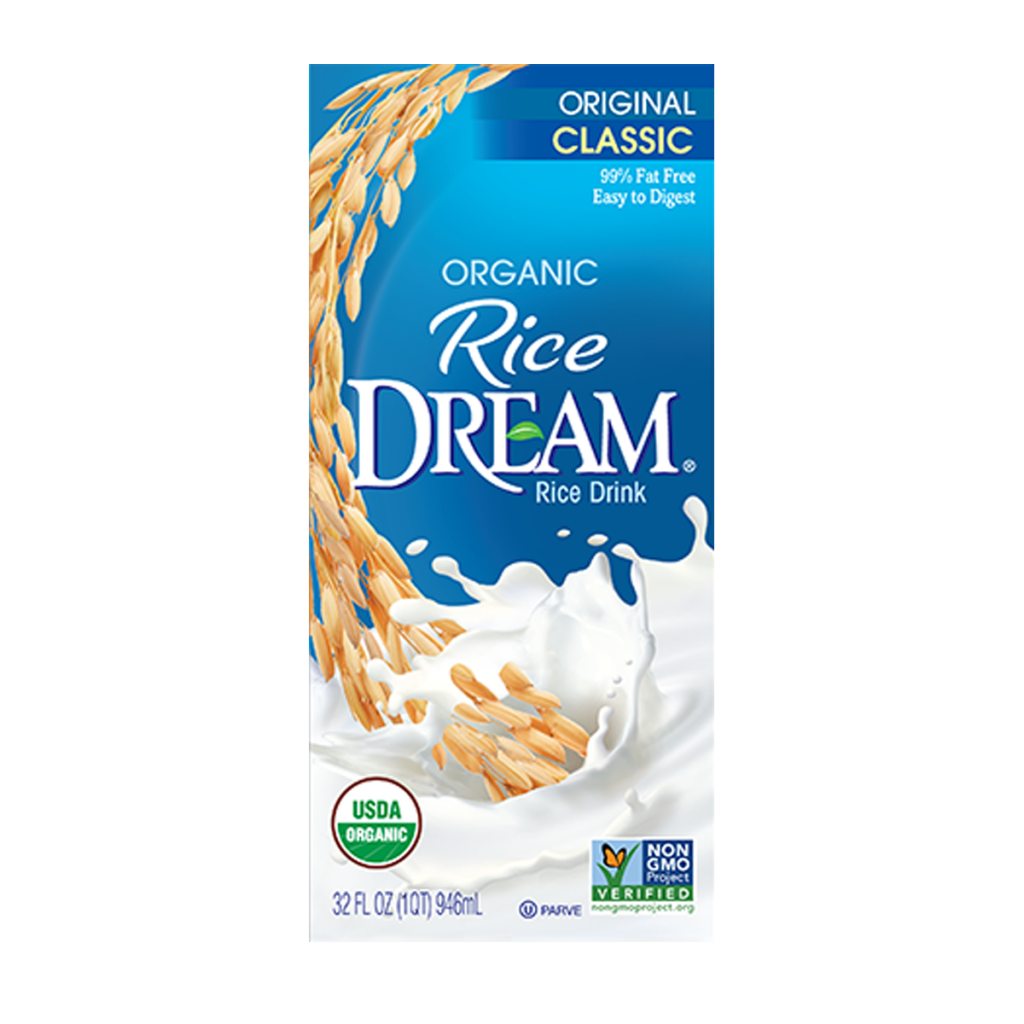
Not FODMAP Tested, but Likely Low FODMAP
Hazelnut Milk
Hazelnut milk is likely low FODMAP, since hazelnuts are low FODMAP in moderate serves. My recommendation is to test tolerance at ½ cup and increase to full serve of 1 cup as tolerated.
This milk is delicious and offers a yummy hazelnut flavor to oatmeal, tea, coffee, and more. I love the simple ingredients found in this brand!
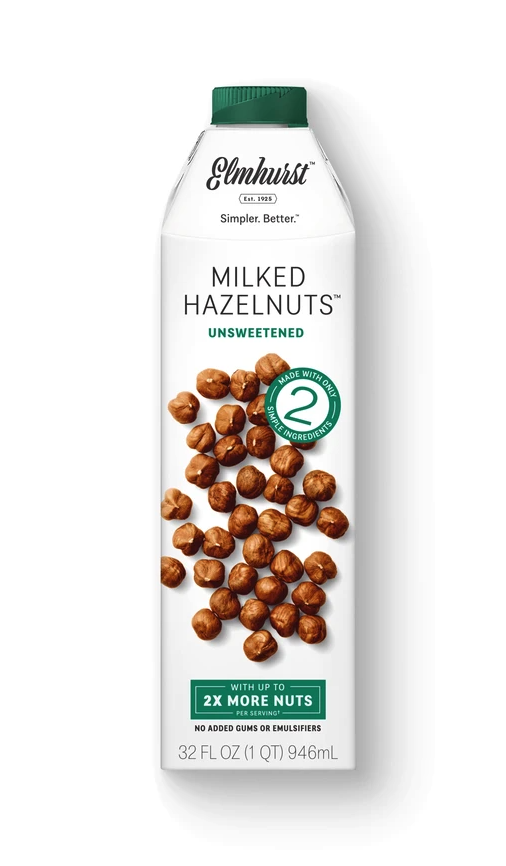
Flax Milk
Flex milk has not been tested by Monash but is likely low FODMAP based on the nutrition facts. One tablespoon of flax seeds is ~55 calories and one cup of unsweetened flax milk is less than 30 calories, which falls within a low-FODMAP serving size. Flax milk boosts a good dose of those heart healthy Omega-3 fatty acids.
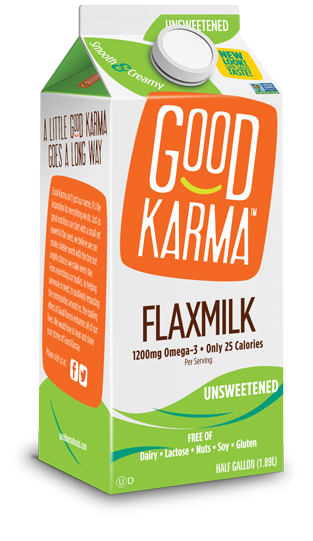
Walnut Milk
Walnut milk has not been tested but Monash but likely low since the nutritional values of one low-FODMAP serving of walnuts falls within one cup of walnut milk.
This milk alternative boosts heart healthy Omega-3 fatty acids and provides a rich, bold, nutty flavor. It is perfect in coffee, hot and cold cereals, smoothies, and more.This is one of my favorite brands, I really appreciate the fact that it contains only walnuts and milk!
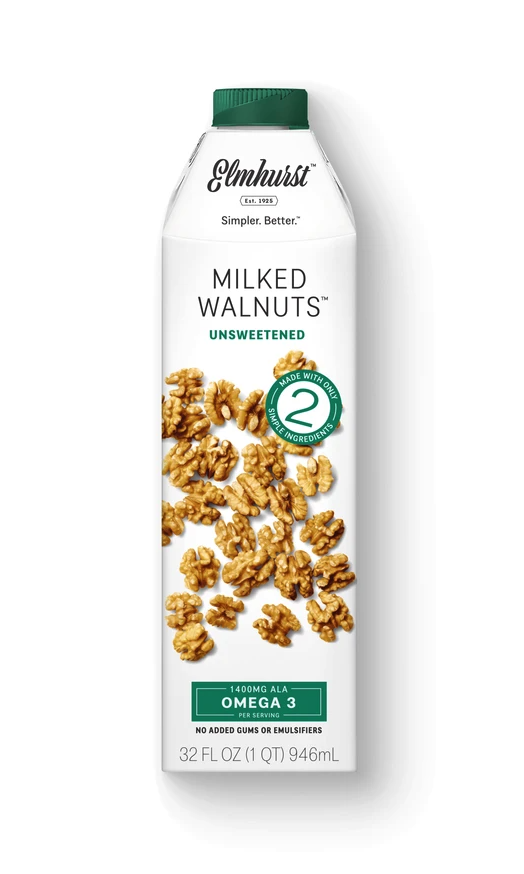
Milk Alternatives to Approach with Caution
Cashew Milk
Monash now has a few certified low-FODMAP cashew milks that are safe at one cup. FODMAP Friendly also tested cashew milk using activated cashews that made the cut at one cup. Based on these results, this dietitian would deduce that the majority of cashew milks are low FODMAP at one cup. However, I have some hesitations with the brands that use 4 times as many nuts in the milk-making process, as this may push the galactan content too high.
My recommendation is that if a cashew milk contains five grams of fat or less, it is likely low FODMAP, and if the fat content is greater than five grams it is likely high FODMAP.
Coconut Milk
Coconut milk is low FODMAP at three fourths of a cup per Monash–not the canned coconut milk, but rather the aseptic cartons or boxes. These are sometimes labeled UHT, which stands for Ultra High Temperature, a process that kills bacteria yielding to longer shelf lives.
Just watch out for certain fibers such as chicory root and inulin, since they make this beverage high FODMAP. The canned coconut used for cooking, often used in curries, has an even smaller low-FODMAP serving size. Watch portions when using coconut milk and check the Monash app for more specific details next time you want to try this creamy tropical nut milk.
Soy Milk
This popular milk alternative can be high or low in FODMAPs based on the processing. Soy milk made from soy protein is low FODMAP at one cup, however finding a US-based brand that uses soy protein is not easy, aside from 8th Continent Soy Milk. (This is the only brand I have been able to locate). Soy milk in the US is often made using soybeans, which makes it high FODMAP due to the galactans.
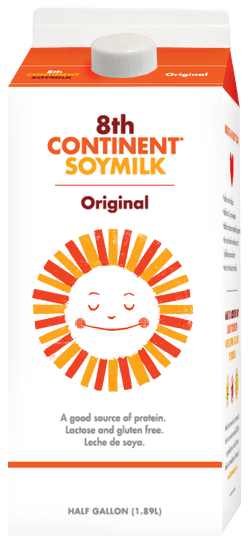
Pea Protein Milk
Pea protein milk is likely low FODMAP, however Monash has retested some different pea protein powders and the FODMAP content is now in question. Many of the pea protein based milks contain small quantities of pea protein, likely resulting in less of a FODMAP load. Pea protein is found in Ripple Milk and some of high-protein almond and flax milks.
Best to approach with caution and test tolerance with a small portion before trying a full serve. Feel free to continue enjoying if you have had good luck with this beverage
Oat Milk
Oat milk is low FODMAP at 1/2 cup. Larger portions are high in fructans, making it high FODMAP. Enjoy this scrumptious milk in moderation and double check ingredients. While the majority appear low FODMAP, I have seen chicory root added to Quaker’s Oat Milk before it was pulled from the market.
By far my favorite oat milk is OATLY! This tastes amazing in coffee and cereal, but honestly it’s perfect by itself or served alongside your favorite low-FODMAP cookie.
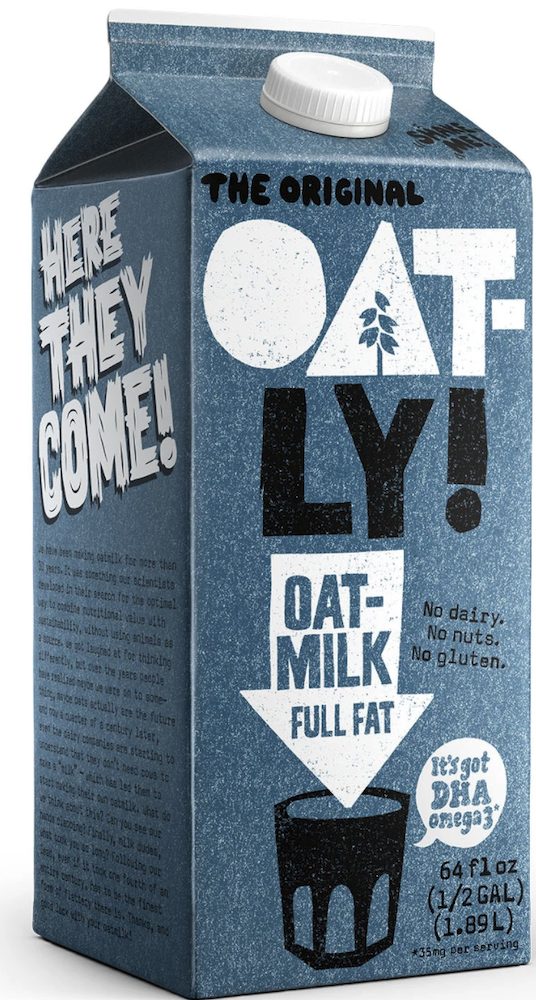
Final Thoughts
Feel free to experiment and try out some of these low-FODMAP milk alternatives, opting for unsweetened options if using for recipe substitutions.
Seek assistance from a dietitian if you were previously a large milk drinker and are looking to swap in a low-FODMAP milk alternative. Also seek professional assistance if you are pregnant, nursing, or modifying cow’s milk intake in a child or someone with specific health concerns. Remember, lactose-free milk has the same nutritional content as regular cow’s milk.
Avoid milk alternatives containing these ingredients: inulin, chicory root, and excessive amounts of honey or agave.
Use caution with protein fortified milk alternatives since pea protein is often used and may be high if present in larger quantities.
Do not be concerned with these ingredients that are often added to milk alternatives:
- Cocoa
- Coconut cream
- Gums – Gellan Gum, Xanthan Gum, Locust Bean Gum. Gellan gum, Guar gum, carrageenan
- Malt extract
- Monosodium Glutamate (MSG)
- Natural Colors
- Natural Flavors
- Oils – sunflower oil, canola oil, safflower, etc.
- Rice protein
- Salt and Sea Salt
- Soy Lecithin
- Sweeteners: Sugar, Cane Sugar, Brown Rice Syrup, Evaporated cane juice, or Cane Syrup)
- Sunflower Lecithin
- Tapioca Starch
- Tapioca Starch
- Vanilla
- Vitamin and Mineral Blends. These micronutrients are often added to improve nutritional value. Calcium Carbonate, Vitamin A Palmitate, Vitamin D2, Ergocalciferol (D2), D-alpha tocerpherol (vitamin E), Vitamin E acetate, Folic Acid, Riboflavin (B2), Vitamin B12, Dipotassium Phosphate, Tricalcium Phosphate, Tricalcium phosphate, Magnesium Phosphate, Potassium citrate, Zinc oxide, Ascorbic Acid.
We hope this article helps clear up any confusion you had about finding a suitable low-FODMAP milk alternative. Now it’s time to start sipping. Cheers to finding your new favorite!
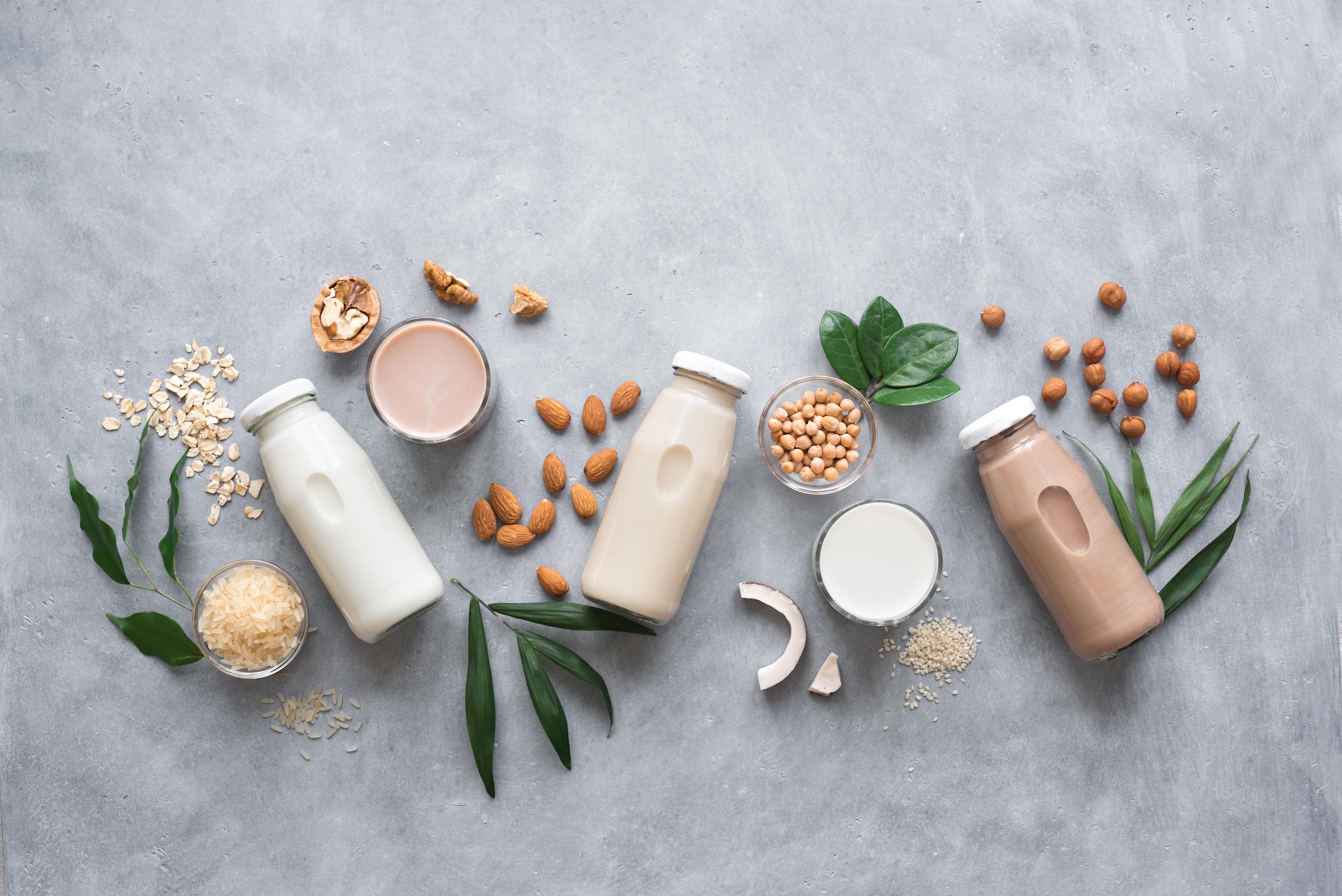
Vanessa, I find all of your entries to be wonderful reads. Thank you for the education and explanation on all facets of the food in question. You are exceptional.
If you went to a coffee shop and ordered a latte, what milk would you request for that latte? (I’m thinking of Starbucks.)
Based on the milk selections available at Starbucks I would opt for almond milk. Unfortunately, lactose-free milk and many of these other low FODMAP alternative milk options are not found at most coffee shops.
You say we should not worry about sugar added to these milks. Can you explain why?
Great piece of content.
Thanks for educating me with such valuable info.
Have you tested pistachio milk from elmhurst? I’ve tried it and seem to do ok but just curious if it’s considered low Fodmap?
Thank you this is the most helpful post I’ve seen. My favourite non-dairy milk for lattés is Elmhurst’s pistachio milk. Any idea where pistachio milk would fall on the spectrum? I only use about 5oz but if it is high I will need to cut it out and stick to almond.
This post was incredibly helpful! I had no idea there were so many low-FODMAP milk alternatives out there. The comparison of each option really clarified which ones might work best for my diet. Thanks for sharing such detailed information!
This post is incredibly helpful! I’ve been struggling with my low-FODMAP diet and was unsure about which milk alternatives to choose. The clear explanations and recommendations make it so much easier to navigate my options. Thank you for sharing your expertise!